After pouring years of hard work into your plumbing or HVAC business, selling it can bring on a whirlwind of emotions. It’s an exciting time, but a nail-biting one for sure—how do you market your value? How will you exit the business?
In Part II of our Buying, Boosting, and Selling: A Beginner’s Guide to Business Series, we’re discussing our trade secrets for successfully selling your HVAC or plumbing business.
1. Prep Your Business to Sell
When you’ve decided to sell your HVAC or plumbing business, you must ensure all current operations are ready to be moved over to new ownership. First and foremost, begin by communicating with your team. From technicians to customer service, your employees deserve to be notified of the potential upcoming sale and any underlying conditions that may impact them. Likewise, consider offering your team training incentives to not only enhance their existing skill sets but also boost the value of your company and spark attention in potential investors.
Next, divert your attention to the financial aspects of your business. Consider incorporating the skills of a CPA or accounting firm to help dissect your current value. Look into your accounts receivable, inventory cost, payroll, and ongoing project spending to see where you currently stand and what could possibly use some attention.
Equally as important, remember to check on the status of your insurance policies. Potential buyers will want to avoid any outstanding issues when looking into investment options, so securing the safety and coverage of the company will help generate positive attention. In that same train of thought, be sure to prepare customer service agreements and warranties for the sale. Inform any stakeholders on your decision to sell in advance to provide customers the same peace of mind.
2. Figure Out Your Bottom Line
 Now that preparation is underway to sell your HVAC or plumbing company, you must determine your bottom line. Potential buyers will analyze your current value to better understand how worthy (or risky) of an investment your business is, and if they believe it can grow. Accounting services can be used to determine the business’s EBITDA (Earnings Before Interest, Taxes, Depreciation, and Amortization), which investors will want to see to understand how profitable the company currently is.
Now that preparation is underway to sell your HVAC or plumbing company, you must determine your bottom line. Potential buyers will analyze your current value to better understand how worthy (or risky) of an investment your business is, and if they believe it can grow. Accounting services can be used to determine the business’s EBITDA (Earnings Before Interest, Taxes, Depreciation, and Amortization), which investors will want to see to understand how profitable the company currently is.
Remember, don’t become deterred if your business isn’t currently at its peak performance. Your goal is to present possible buyers with your company’s current standing to help them better understand where they can grow it after the acquisition. Sharing your financials will also help buyers determine if the company is marketable and in the right position for any necessary improvements—even if it’s not ready to profit right out the gate.
Keep in mind that there will also be costs to sell your business. These costs will need to be tied into your bottom line. Business brokers tend to charge a 4 percent to 12 percent commission on sales as they help list, market, and legally transition ownership of the company.
3. Develop Your Exit Strategy
 Once your business is prepped, and finances are aligned, you must develop an exit strategy that accounts for both current customers and employees. As you know, customer loyalty is an essential part of trade businesses. With a big shift in your ownership, inform long-term clients of your decision to sell and offer some sort of introductory incentives, such as service specials. This offer will significantly help the transition run smoother and forge a connection between existing customers and new management.
Once your business is prepped, and finances are aligned, you must develop an exit strategy that accounts for both current customers and employees. As you know, customer loyalty is an essential part of trade businesses. With a big shift in your ownership, inform long-term clients of your decision to sell and offer some sort of introductory incentives, such as service specials. This offer will significantly help the transition run smoother and forge a connection between existing customers and new management.
Likewise, consider the needs of new management. Don’t be stingy—grabbing the check and running may hurt the company in its early stages of new ownership and can leave your old team unhappy. Offer to stay around for three to six months to aid in the transition and help guide new management in the right direction. This enthusiasm not only creates a smooth exit but also promotes interest and ease of mind for potential buyers.
Remember to also remain considerate of your employees. Because the transition of management could be tough on them, consider training an existing top employee to take your place once the sale is complete. Investing in a trusted technician to helm the wheel gives potential buyers a confidence boost and helps maintain the original flow of operations and company culture for long-time employees.
4. Find the Help You Will Need
Operating and attempting to sell a business simultaneously is almost impossible. To aid in the process of selling faster and getting a top price, you should consider finding a business broker. A business broker helps you along all stages selling your HVAC or plumbing business, from appraising and marketing to communicating with investors about your business listing.
Without help in these various departments, you might be left with a weak selling price and unfit buyers. Not to mention, business brokers navigate all the essential paperwork and legal transfers necessary to finalize the sale once a buyer has been chosen. Instead of juggling everything on your own, find the help you’ll need in advance.
Are You Selling a Business?
Selling a business isn’t easy, but following these essential steps will help make the process significantly less stressful. From determining your bottom line and developing an exit strategy to finalizing the sale with a business broker, you can safeguard your business’s value and the satisfaction of customers and employees alike.
Now, flip the script and check out next week’s guide to buying HVAC and plumbing businesses in our Buying, Boosting, and Selling: A Beginner’s Guide to Business Series.
Jenna Ochoa
Vice President - Claims, JB Warranties






